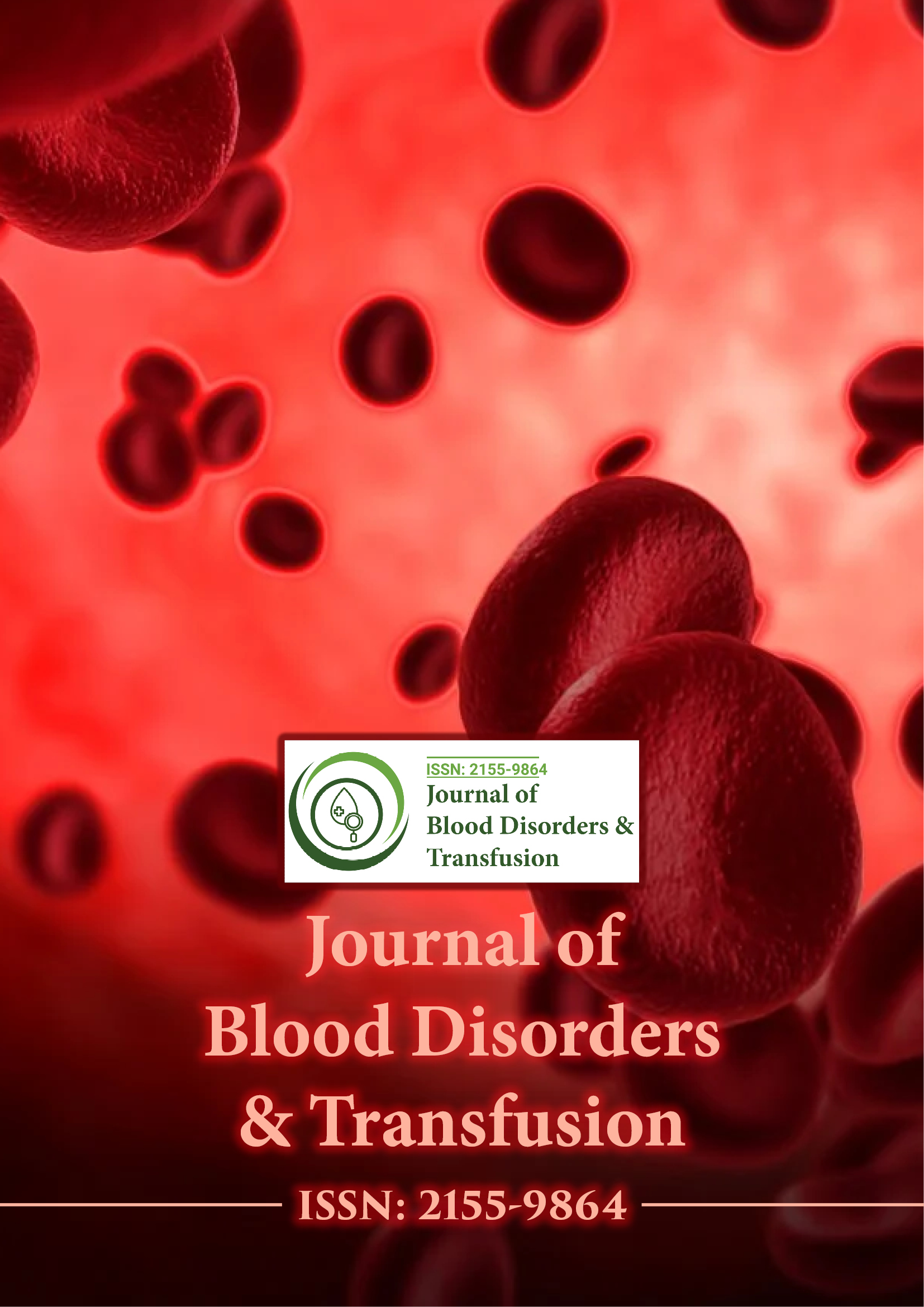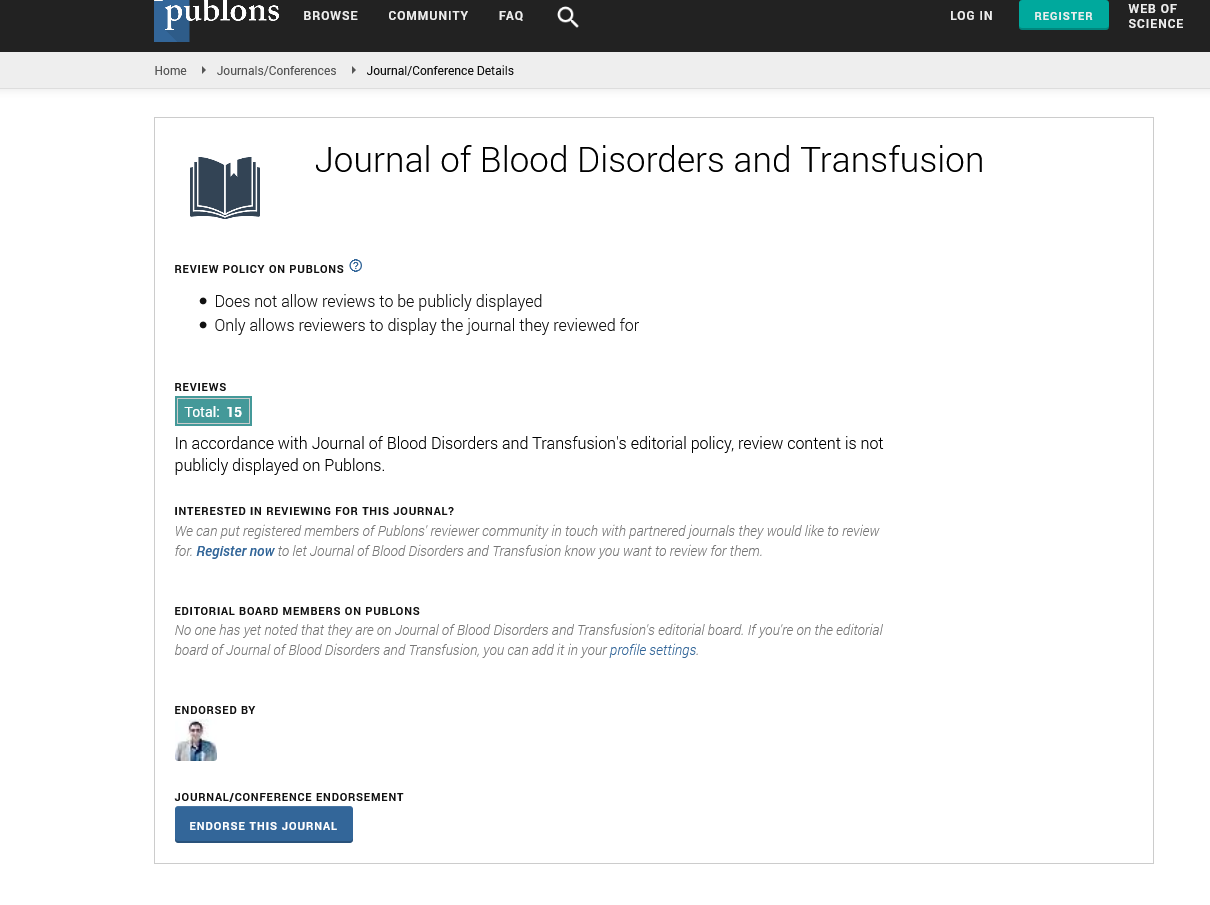Indexed In
- Open J Gate
- Genamics JournalSeek
- JournalTOCs
- Ulrich's Periodicals Directory
- RefSeek
- Hamdard University
- EBSCO A-Z
- OCLC- WorldCat
- Proquest Summons
- Publons
- Geneva Foundation for Medical Education and Research
- Euro Pub
- Google Scholar
Useful Links
Share This Page
Journal Flyer

Open Access Journals
- Agri and Aquaculture
- Biochemistry
- Bioinformatics & Systems Biology
- Business & Management
- Chemistry
- Clinical Sciences
- Engineering
- Food & Nutrition
- General Science
- Genetics & Molecular Biology
- Immunology & Microbiology
- Medical Sciences
- Neuroscience & Psychology
- Nursing & Health Care
- Pharmaceutical Sciences
Commentary - (2025) Volume 0, Issue 0
Integration of Protein and Molecular Markers in Coagulation Monitoring
Kym Morris*Received: 26-May-2025, Manuscript No. JBDT-25-29780; Editor assigned: 28-May-2025, Pre QC No. JBDT-25-29780 (PQ); Reviewed: 11-Jun-2025, QC No. JBDT-25-29780; Revised: 18-Jun-2025, Manuscript No. JBDT-25-29780 (R); Published: 25-Jun-2025, DOI: 10.4172/2155-9864.25.S14.066
Description
Coagulation disorders are associated with significant morbidity and mortality due to abnormal bleeding or thrombotic events. Conventional laboratory tests often fail to detect early or subclinical abnormalities, leading to delayed intervention. Recent research has identified novel biomarkers that may improve early detection and monitoring of coagulation disorders. These include protein markers, platelet-derived molecules, endothelial activation indicators and molecular signatures.
Coagulation disorders encompass a wide spectrum of conditions ranging from inherited deficiencies to acquired hypercoagulable states. Early recognition is essential to prevent severe complications such as venous thromboembolism, disseminated intravascular coagulation, or hemorrhagic episodes. Standard coagulation assays, including Prothrombin Time (PT), activated Partial Thromboplastin Time (aPTT) and platelet counts, have limitations in sensitivity and specificity. Advancements in laboratory techniques and molecular biology have enabled the identification of novel biomarkers that provide deeper insight into hemostatic processes. These markers may detect subtle abnormalities, monitor disease progression and guide therapeutic decisions.
Protein-based biomarkers
Protein biomarkers provide a direct measure of coagulation factor activity and thrombin generation. D-dimer remains widely utilized for identifying thrombotic events but is limited by nonspecific elevations in inflammatory or postoperative conditions. Other markers, including thrombin-antithrombin complexes, prothrombin fragment 1+2 and soluble fibrin, offer a more specific reflection of coagulation activation. Fibrin degradation products and fibrinopeptides may indicate ongoing clot formation and lysis. Novel plasma proteins associated with endothelial damage, such as tissue factor-bearing microparticles, have been correlated with increased thrombotic risk. Quantitative measurement of these proteins provides valuable information on coagulation status.
Platelet-derived biomarkers
Platelets play a central role in hemostasis and their activation contributes to both bleeding and thrombotic disorders. Biomarkers derived from platelets include soluble P-selectin and platelet factor 4, which indicate platelet activation and degranulation. Platelet-derived microparticles are also recognized as procoagulant entities, reflecting cellular activation and endothelial interaction. Monitoring these biomarkers can help predict thrombotic events, evaluate platelet function and assess the efficacy of antiplatelet therapy. Advances in flow cytometry and immunoassays enable precise quantification of platelet-derived molecules in clinical samples.
Endothelial activation markers
The endothelium modulates coagulation by producing anticoagulant and procoagulant factors. Endothelial activation biomarkers provide insight into vascular health and risk of thrombotic complications. Key markers include von Willebrand factor, soluble thrombomodulin and tissue factor pathway inhibitor. Elevation of these markers reflects endothelial stress or damage, which may precede clinical events. Additional markers, such as soluble E-selectin and adhesion molecules, contribute to understanding inflammatory influence on coagulation. Assessing endothelial biomarkers alongside traditional coagulation tests improves the identification of patients at risk for thrombotic or bleeding complications.
Inflammatory and molecular biomarkers
Inflammatory pathways are closely integrated with coagulation processes. Cytokines, such as tumor necrosis factor-alpha, can modulate thrombin generation and fibrinolysis. Measurement of these cytokines provides information on the inflammatory contribution to coagulation disorders. Molecular biomarkers, such as circulating microRNAs, offer additional insights into gene expression patterns associated with hypercoagulability or bleeding tendencies. Genomic and transcriptomic profiling can identify patients with inherited coagulation defects or acquired predispositions. Combining molecular biomarkers with protein and cellular markers enhances early detection and stratification.
Clinical applications
Novel biomarkers have potential applications across a range of clinical settings. In the perioperative context, they can identify patients at risk for postoperative thromboembolism or hemorrhage. Inherited coagulation disorders, such as hemophilia or von Willebrand disease, may be detected earlier through sensitive biomarker assays. Biomarkers also facilitate monitoring of anticoagulant therapy, enabling dose adjustments based on individual hemostatic profiles. Integration into routine laboratory assessment can improve risk prediction and patient management, especially in complex cases where conventional assays are insufficient.
Diagnostic strategies
The use of a combination of biomarkers enhances diagnostic accuracy. Multiplex platforms allow simultaneous measurement of thrombin generation, platelet activation, endothelial markers and inflammatory mediators. Point-of-care assays provide rapid assessment in clinical scenarios requiring immediate decision-making. Standardization of biomarker assays, establishment of reference ranges and validation in diverse populations are necessary to ensure reliability. Algorithms integrating multiple biomarkers with clinical parameters can support early identification of high-risk patients and guide intervention.
Novel biomarkers offer opportunities for earlier detection and improved monitoring of coagulation disorders. Protein-based markers, platelet-derived molecules, endothelial indicators and molecular signatures collectively provide a comprehensive view of hemostatic function. Incorporation of these biomarkers into clinical practice enhances diagnostic accuracy, supports individualized patient management and may reduce the incidence of severe thrombotic or bleeding complications. Continued research, standardization and validation are essential to maximize clinical utility and integration into routine care.
Citation: Morris K (2025). Integration of Protein and Molecular Markers in Coagulation Monitoring. J Blood Disord Transfus. S14:066.
Copyright: © 2025 Morris K. This is an open-access article distributed under the terms of the Creative Commons Attribution License, which permits unrestricted use, distribution, and reproduction in any medium, provided the original author and source are credited.

